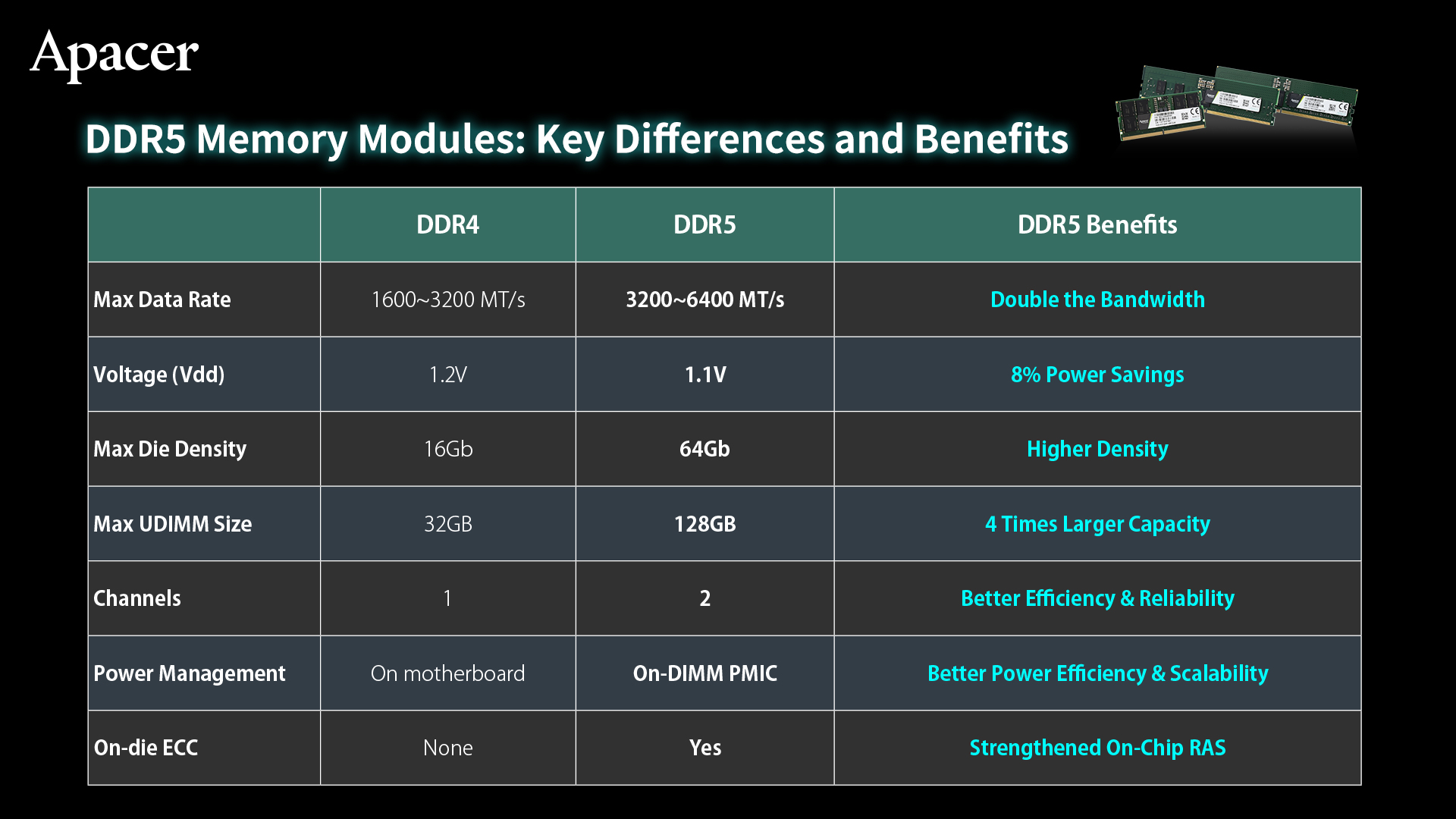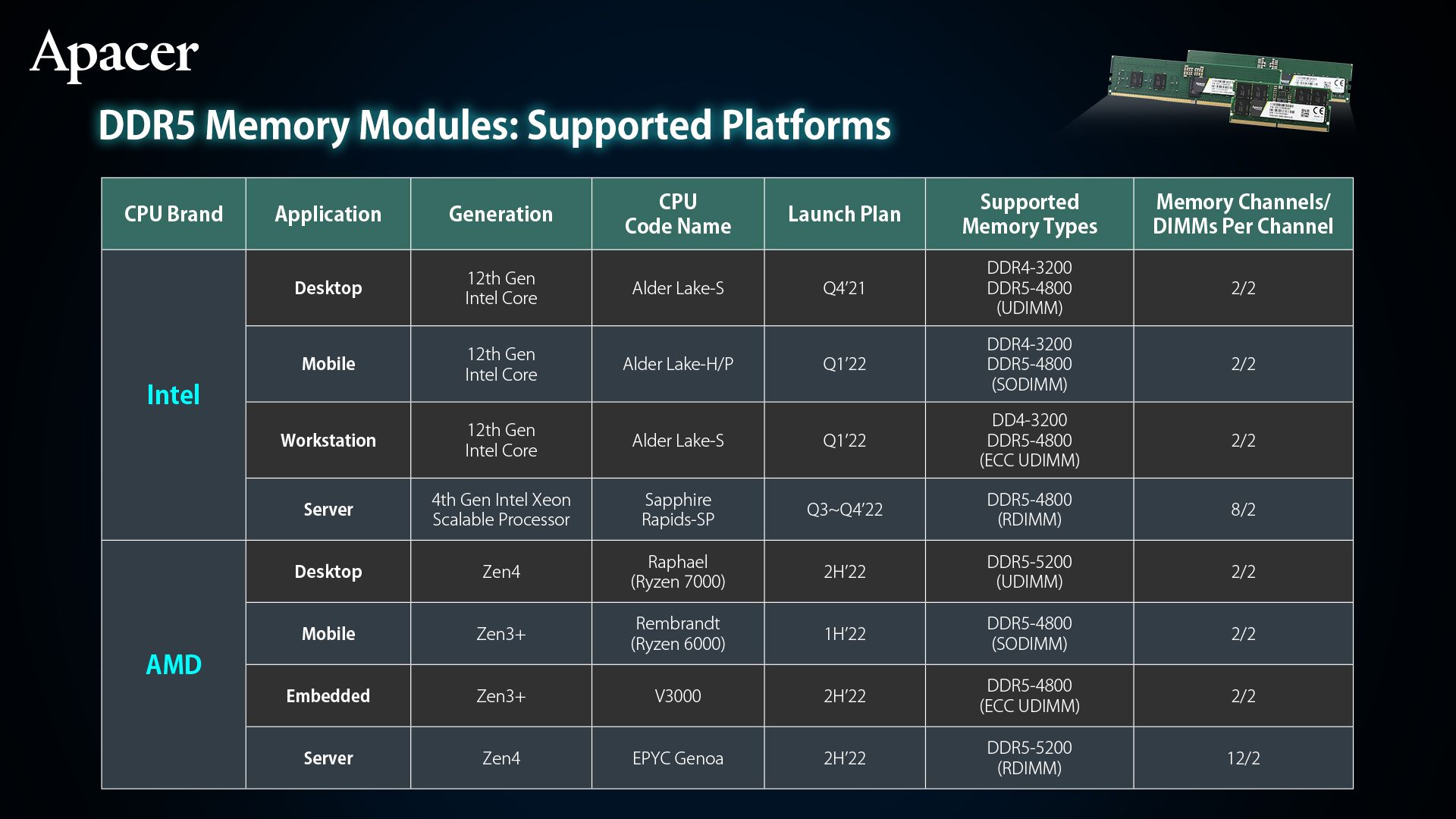Following Intel's release of the 12th-generation Core desktop processor Alder Lake, the next-generation server platform Eagle Stream and AMD’s Zen4 Genoa will be launched in 2022. This will officially kick off the industrial applications for DDR5 memory modules. The design and research into related products will also begin.
The memory bandwidth of DDR5 is twice that of DDR4. If the transfer rate is calculated at the initial 4800Mhz, it is 50% higher than the 3200Mhz of DDR4. In addition to significant improvements in performance, DDR5 memory has also made good progress in capacity, stability and power-saving efficiency. Enterprise and data center servers, AI, high-speed computing and other applications are expected to become the early adopters of DDR5 technology in the industrial market. DDR5 RDIMM industrial server memory, with its excellent performance and reliability, shoulders critical tasks such as increasing the speed of massive data transfers and ensuring that servers operate at optimal workloads.
However, what are the differences in technical specifications of DDR5 RDIMMs, which demand special attention during product development? When adopting DDR5 industrial memory, what’s the best way to grasp the advantages and seize the market opportunity?
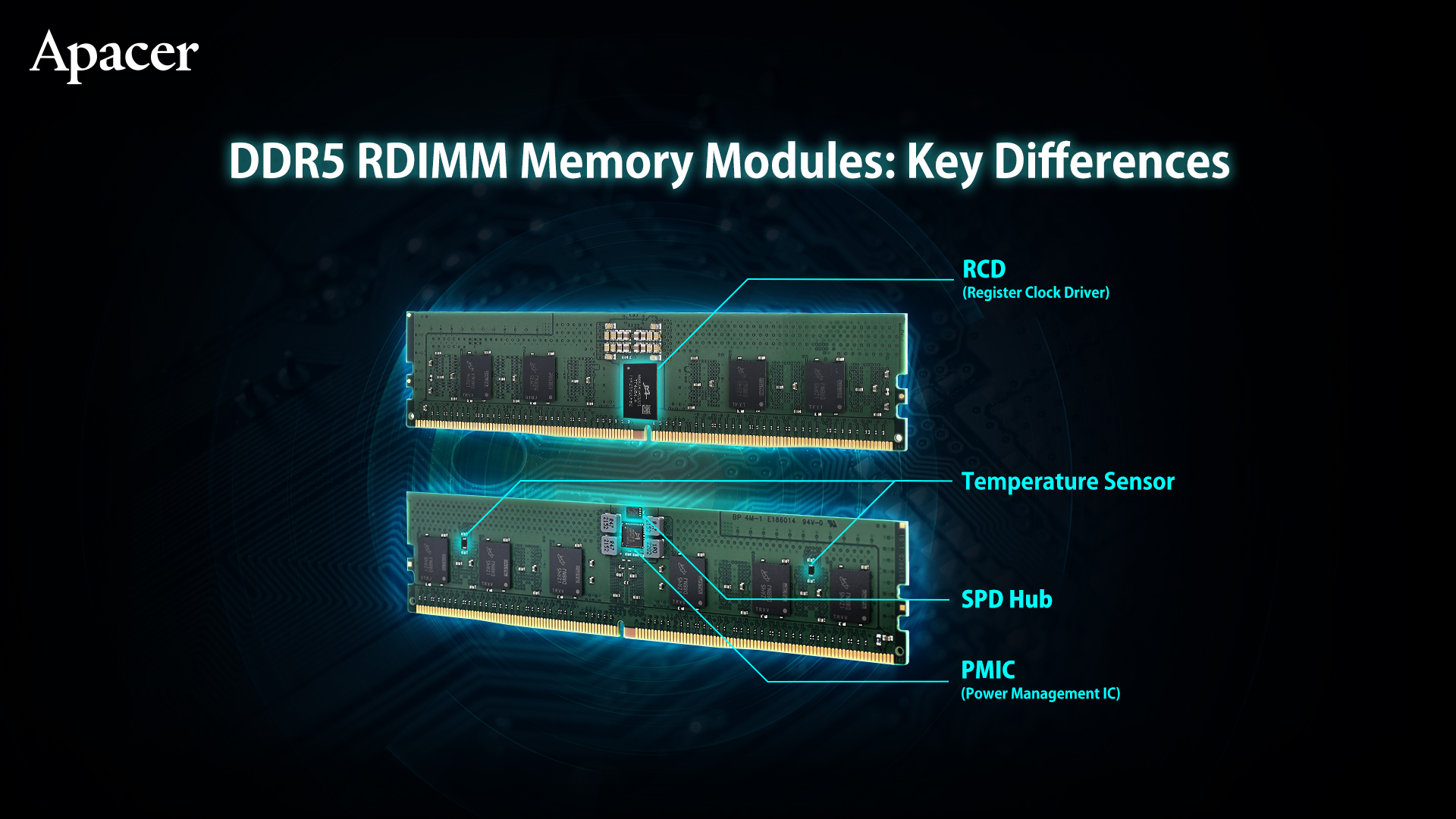
DDR5 RDIMM Server Memory Modules - Key Specification Differences
1. Dual-channel Architecture, Double the Bandwidth
DDR5 memory is developed with a new channel architecture, providing two sets of completely independent 32-bit sub-channels. Not only does the double bandwidth mode improve overall performance, but it also effectively shortens access latency and improves channel efficiency.
The DDR5 RDIMM server memory has dual 40-bit sub-channels, adding 8 bits to the existing 32 bits of each channel to support ECC error detection and correction mechanism. The design of the RCD (Registering Clock Driver) can further reduce the load of the CPU, strengthen the signal integrity and reduce interference.
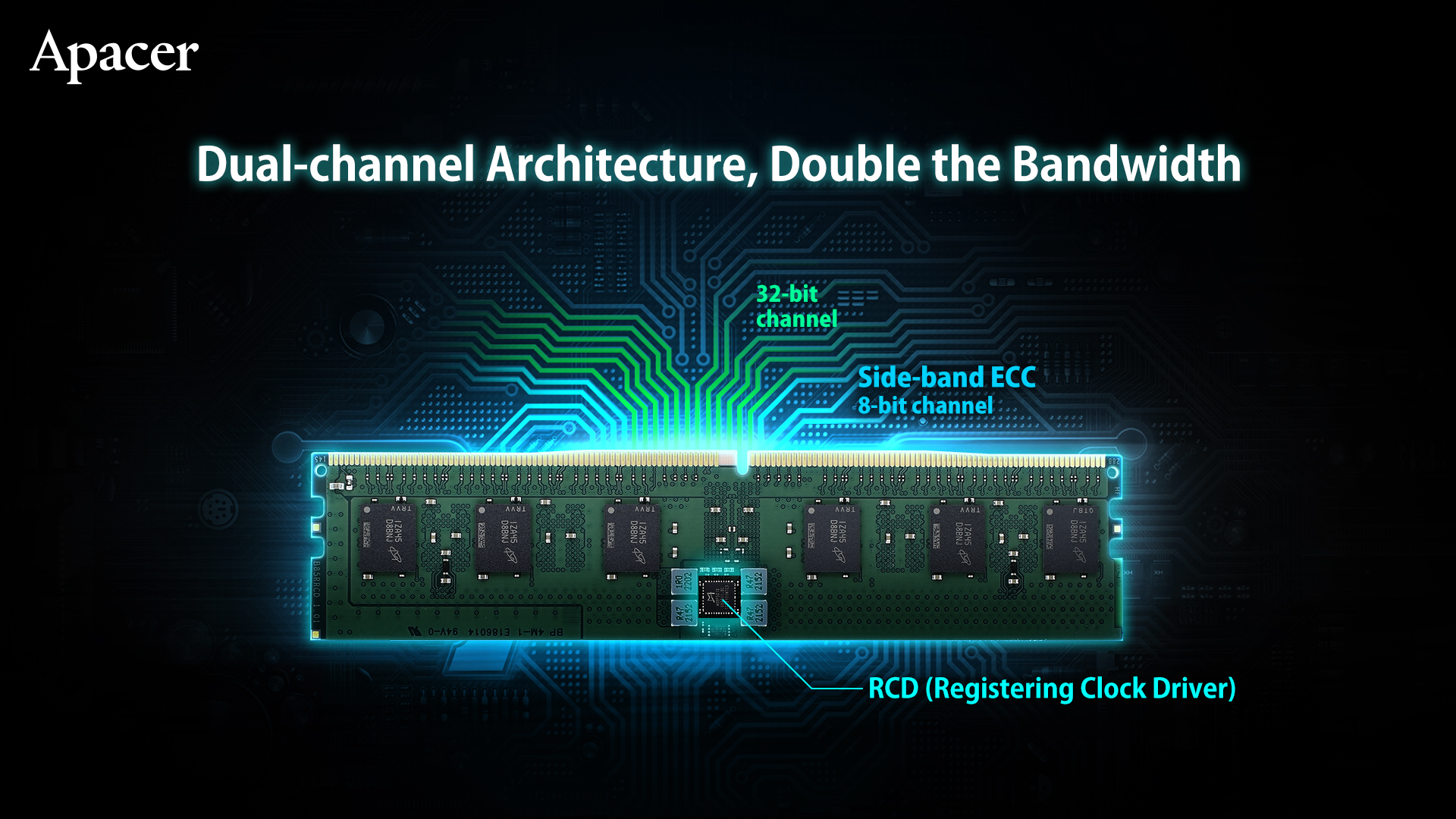
2. Double the Number of Bank Groups and Improved Performance
Compared with DDR4, the bank groups of DDR5 memory have increased from 4 to 8, and the total number of banks has also increased from 16 to 32. The number of bank groups is doubled, which helps to increase the amount of data transmitted, thereby optimizing the overall core timing parameters. This allows the memory to respond to execution actions at a faster speed and achieve ultra-high performance.
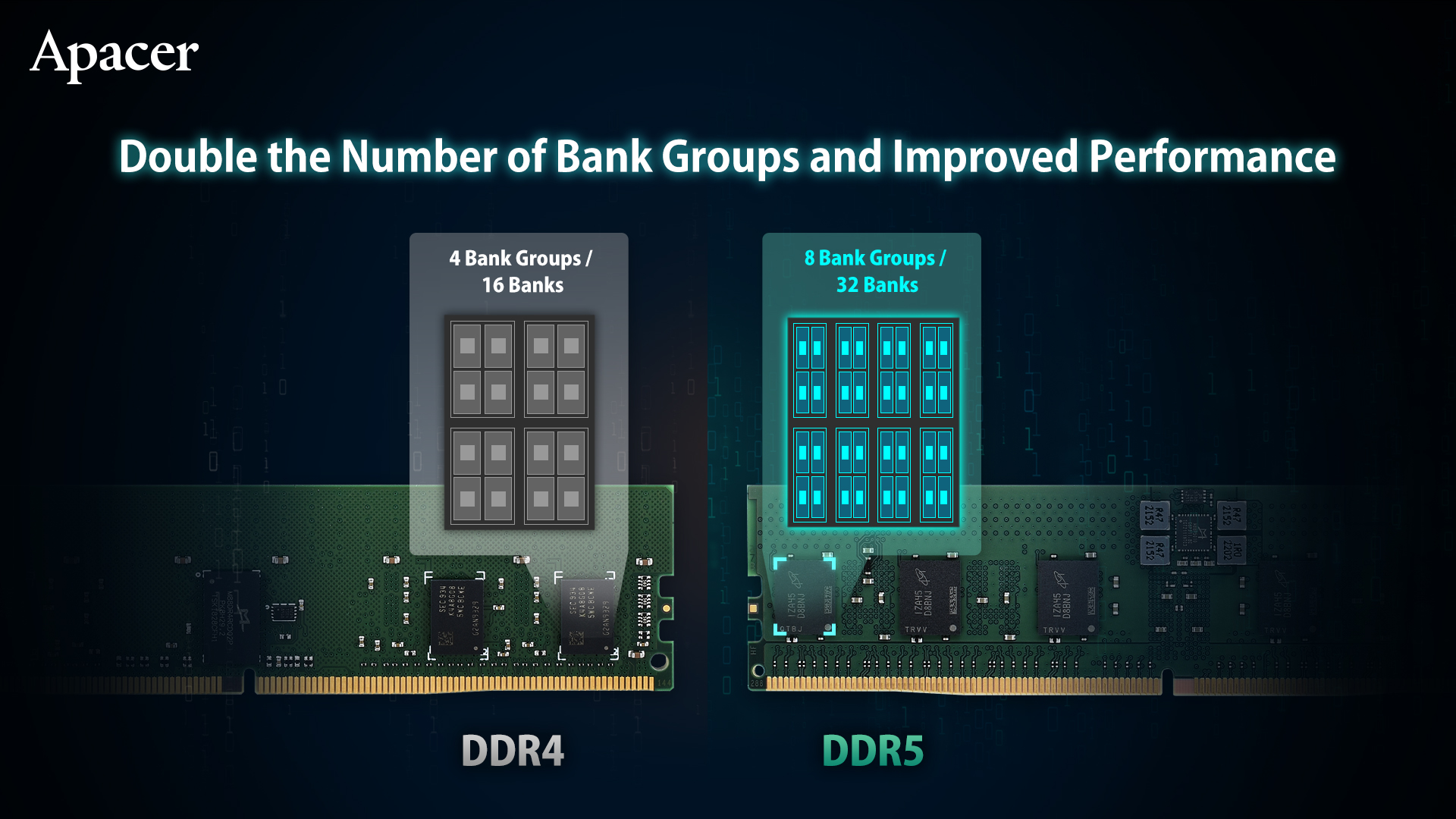
3. Voltage Drop Means Great Power Savings
The standard operating voltage of DDR5 memory is reduced from DDR4’s 1.2V to just 1.1V, which improves the power saving efficiency by 8%. This can reduce system power consumption and heat generation, especially for industrial systems that require low power consumption and have difficulties with heat dissipation. Server applications that require 24/7 operation also enjoy additional power saving benefits.
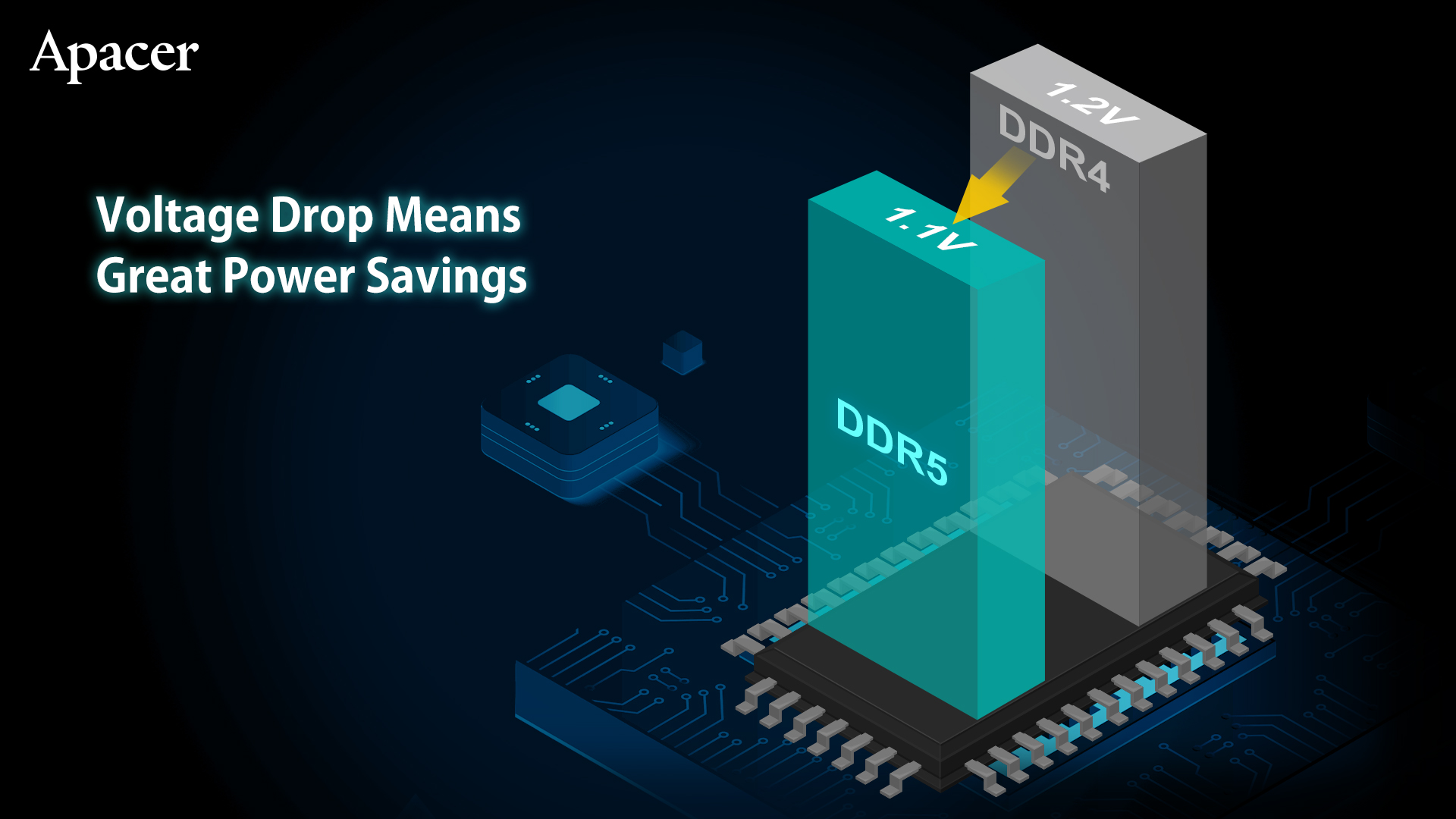
4. PMIC Makes the Signal More Stable
With the voltage reduced to 1.1V, in order to ensure voltage accuracy for stability during high-speed operations, DDR5 memory also adds power management functions. Instead of the traditional control method through the motherboard, the DDR5 memory is equipped with a power management IC (PMIC), which can control the system power load more efficiently and improve the power conversion efficiency by 85%. It thereby improves signal integrity and compatibility, and even reduces the cost of the motherboard design for power supply.
In addition, although they both output a working voltage of 1.1V, there are currently two PMIC specifications used in DDR5 memory. Unlike DDR5 UDIMM and SODIMM which use 5V PMICs; for server applications, DDR5 RDIMM server memory uses a 12V PMIC, and special attention should be paid to system platform design.
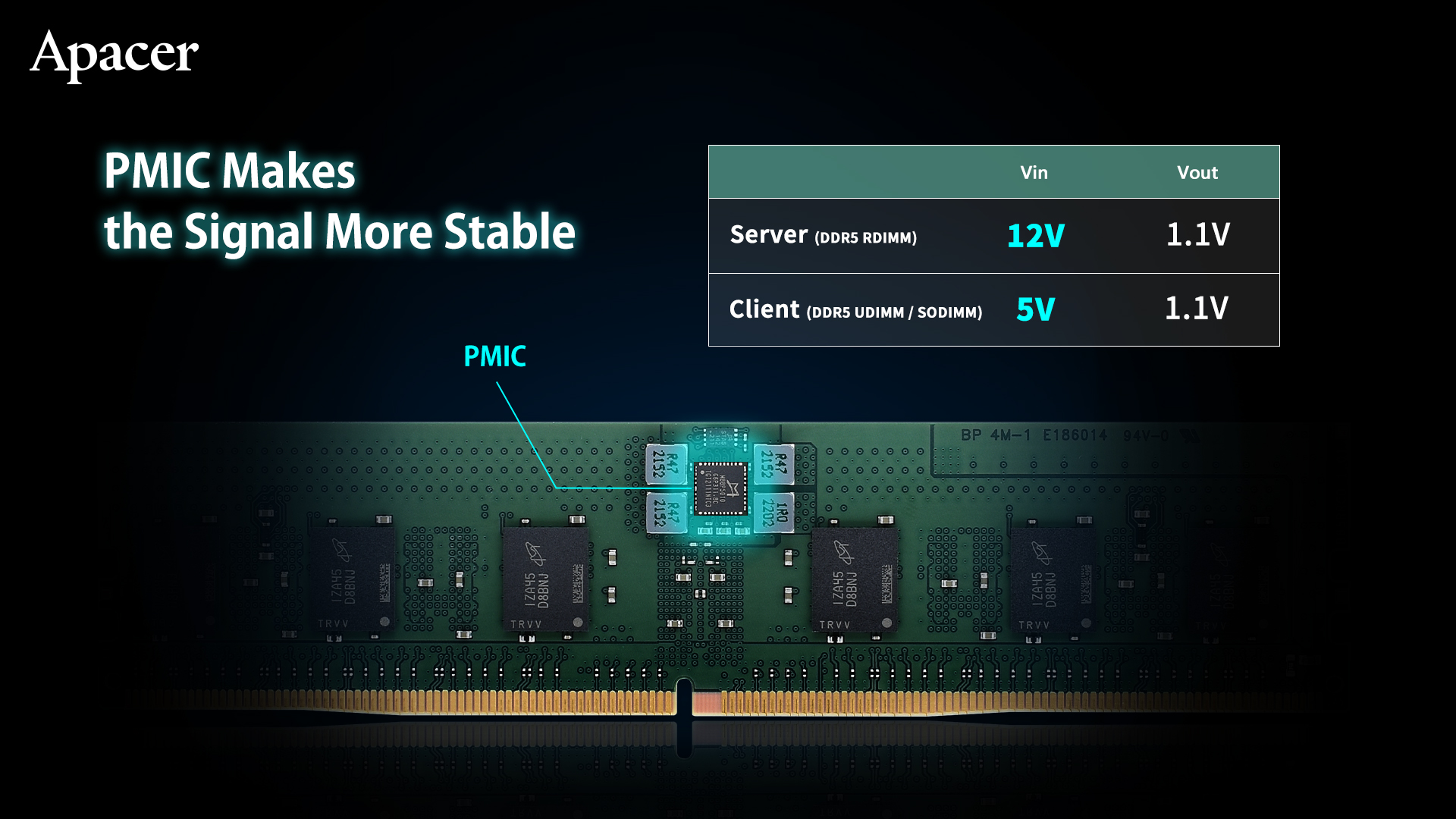
5. Equipped with On-die and Side-band ECC for Automatic Error Correction
In order to achieve higher performance, DDR5 memory has been improved in both capacity and data density. However, the technology scaling may also increase the risk of data errors. DDR5 RDIMM server memory supports On-die and Side-band ECC mechanisms, which can automatically detect and correct data errors in the memory. They provide end-to-end complete protection for the data transmission process and improve memory data fault tolerance, thereby improving data accuracy.
More importantly, this error correction mechanism also contributes to the stable and reliable performance of the system, meeting the reliability, availability and serviceability requirements of server applications for long-term operation.
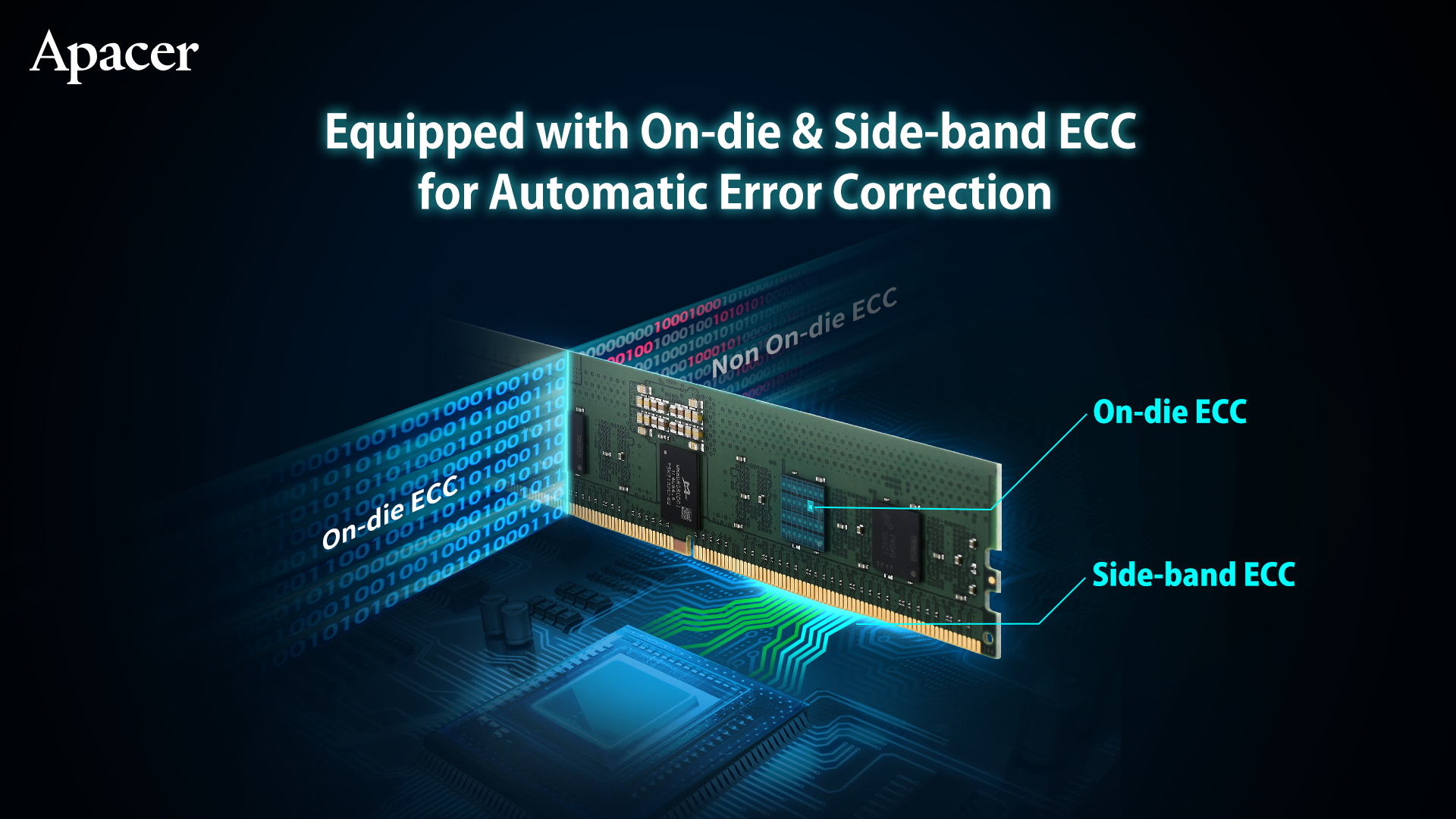
6. Temperature Sensor Configuration Can Avoid Overheating
In addition to adopting new components such as RCDs, PMICs and SPD hubs, DDR5 RDIMM server memory also adds a high-precision temperature sensor. This provides detailed memory temperature data to monitor the heat dissipation of the memory in real time. When designing the airflow of the system, the R&D personnel can also calculate the heat dissipation more accurately, avoiding excessive heat accumulation and affecting the stability of the system operation.
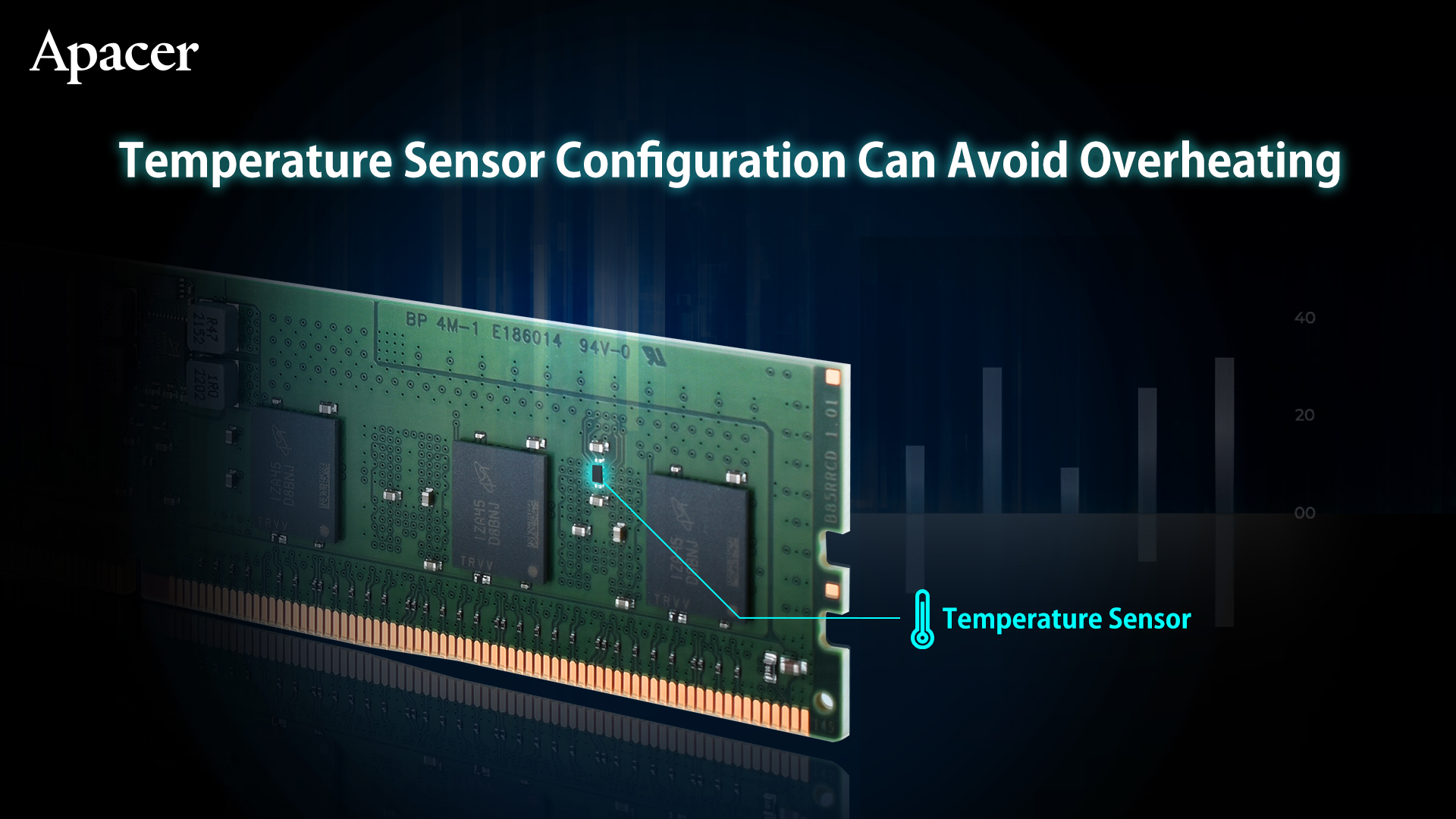
7. Same Bank Refresh Function Shortens Delay Time
In DDR4, for a refresh to occur, all banks need to be in an idle state and cannot execute other instructions at the same time. The Same Bank Refresh function of DDR5 memory allows the system to update a specific bank without affecting the access of other bank data, greatly reducing overall idle delay and improving system performance.
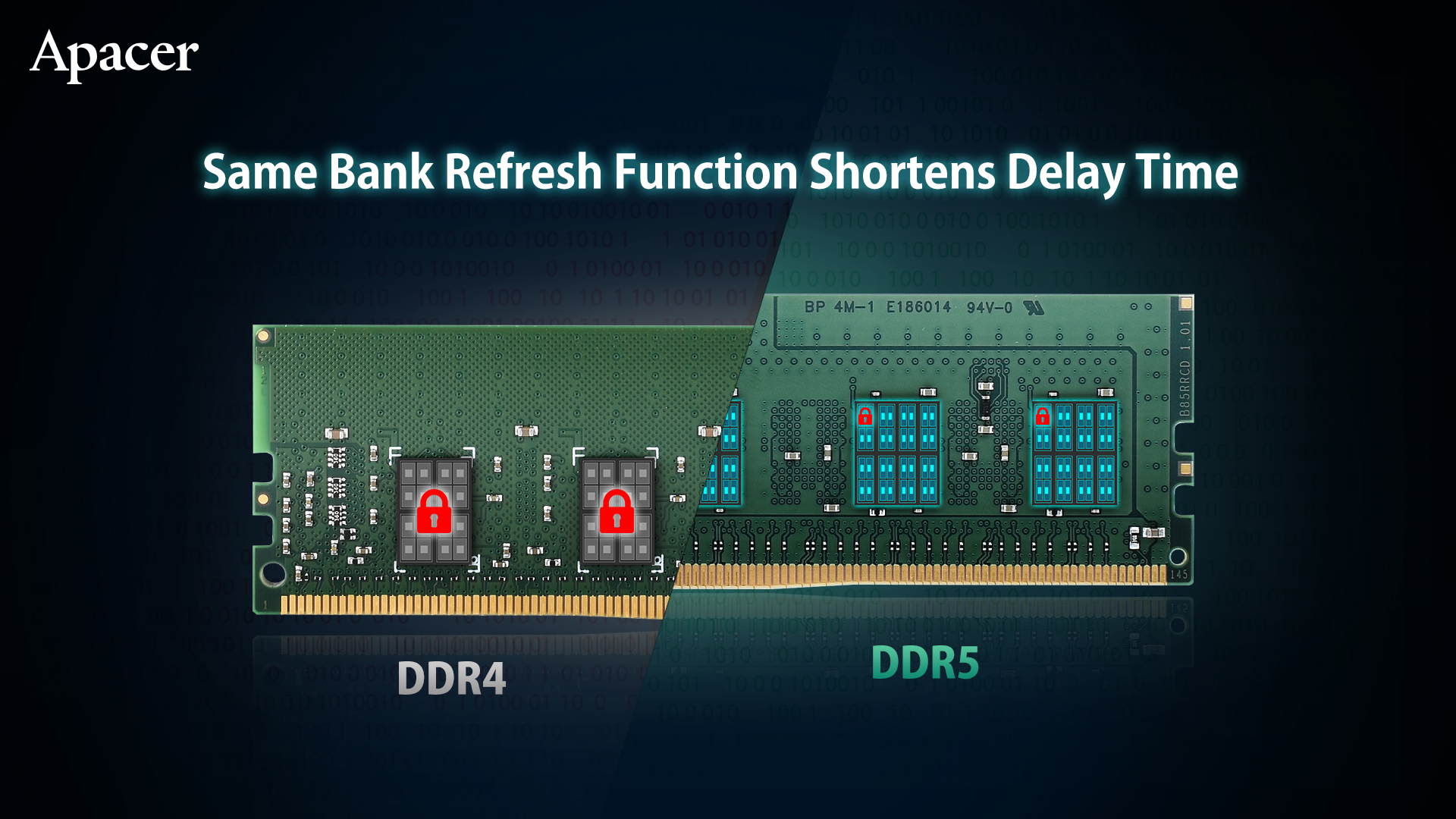
How Should You Choose DDR5 Memory Modules? Is It Time to Get On the DDR5 Technology Train?
The demands of the industrial market for massive data processing and high-performance computing continue to grow, accelerating the need for memory technology upgrades. The introduction of DDR5 technology has also become inevitable. Processor platforms supporting DDR5 applications in the market have been launched one after another. This is a critical moment for introducing DDR5 memory and developing related system platforms. The following are some metrics that can be used as a reference for selecting DDR5 industrial memory products in the future.
1. Importance of the JEDEC 1.0 Mass Production Version Test
In the process of development and testing of DDR5 products, they must comply with the standards formulated by the JEDEC Solid State Technology Association and also be in accordance with the specifications of the mass production version recognized by JEDEC. At present, JEDEC has released the DDR5 RDIMM server memory 1.0 mass production standard. In other words, when selecting DDR5 RDIMMs, special attention should be paid to whether the manufacturer has completed the test in accordance with the JEDEC 1.0 standard specification, and is ready for mass production. At present, Apacer's DDR5 memory has completed the latest JEDEC mass production version test, and mass production is just around the corner.
2. Use of High-quality Original ICs
In key applications such as the industrial market, servers and data centers, the cost and goodwill lost due to downtime are often too large to measure. These applications cannot bear abnormal risks such as unstable memory quality. Industrial memory modules made with high-quality original DDR5 DRAM ICs from major manufacturers have extremely high product reliability and warranty protection, and are the first choice for industrial systems.
3. Support for Multiple Value-added Protection Technologies
The application scenarios of industrial memory are diverse, and server applications are no longer limited to running in indoor computer rooms with comprehensive environmental control equipment. How to improve the environmental resistance of DDR5 memory will be the key. At present, there are mature value-added protection technologies available on the market, such as Conformal Coating, Underfill, and Apacer's patented Anti-Sulfuration technology, all of which can protect the DDR5 module’s surface from external environmental challenges such as humidity, dust, environmental pollution, vibration and shock.
